One of five mating groups of purebred and first cross Nudie Romney ewe hoggets, mid April. The first cross Nudies (Streakers) scanned 134%, 9% dry, the purebreds 104%, 20% dry.
The global meat price index peaked in June 2022. The index is continuing to fall as China’s pig population recovers from African Swine Fever, and Australia exports more sheep meat following three years of rebuilding the national flock by 16 million. Add an economic slowdown around the world, the gouging of all New Zealand employers by a socialist government, the threat of five new taxes, and rampant domestic inflation, we sheep farmers are suddenly facing a very difficult situation.
Where’s the upside?
- The New Zealand dollar will weaken, improving farm gate prices.
- A change of government will bring bold leadership to reducing the numbers of bureaucrats, beneficiaries, and consultants. And increase the percentage of people contributing to economic output. New Zealand needs a reset, like 1984. Did you know that the retirement age in Australia will be 67 next year, 67.5 in 2026? And the Australian superannuation fund is valued at over $A3 trillion now?
- Celebrate! The latest science model shows that methane and nitrous oxide are irrelevant in causing global warming. In one hit that takes the scapegoat monkey off farmers’ backs, and removes 40% of New Zealand’s supposed greenhouse gas emissions. Great news for farmers, great news for New Zealand.
- Global meat and fish consumption, now at 544 billion tonnes, continues to increase. Per capita consumption has been increasing in all bar six countries. Don’t believe our media preaching that the world is going vegetarian.
- JBS was the biggest food processor in the world last year, bigger than Nestle. JBS has fourteen meat processing plants in Australia. The margins in New Zealand are too low to attract their attention. You get a bigger share of the pie here.
- Grass fed beef in the USA fetches around a $US3/kg premium at retail. Do we take grass fed lamb and mutton for granted, and fail to promote for a premium?
- New Zealand has quota access for sheep meat into the EU, an advantage over Australia.
- Shall we introduce a “Social Licence to live in Cities”? Urban heat islands, underground as well as above ground, plus all the vehicle movements required to keep people fed and entertained, have a huge impact on directly causing global warming, with billions of engines putting out heat, day and night. By contrast, subsistence agriculture has very little impact on manmade warming. New Zealand is uniquely set up with hundreds of thousands of lifestyle blocks. These could be subdivided further for subsistence farming, with tiny houses on each half hectare block.
- Guy Farman, now part owner of Farman/Turkington Ltd, running up to twenty six logging gangs in the lower North Island, “In 2006 I was running a sawmill for Carter Holt at Tokoroa. Every two weeks I was required to drive to head office in Auckland and file a report. There were around two hundred people at head office, and a spare desk was hard to find. Then Graeme Hart bought Carter Holt. Three months later there were three people at head office”. Vote Graeme Hart for Prime Minister?
- A mild winter and good scanning results augur well for a bumper spring harvest.
- Downturns are when opportunities surface.
The Wairere roadshow
Our Wairere team greatly enjoyed the trip around the country, and learned from your feedback on our presentation.
Revenue per hectare
Where’s your sweet spot?
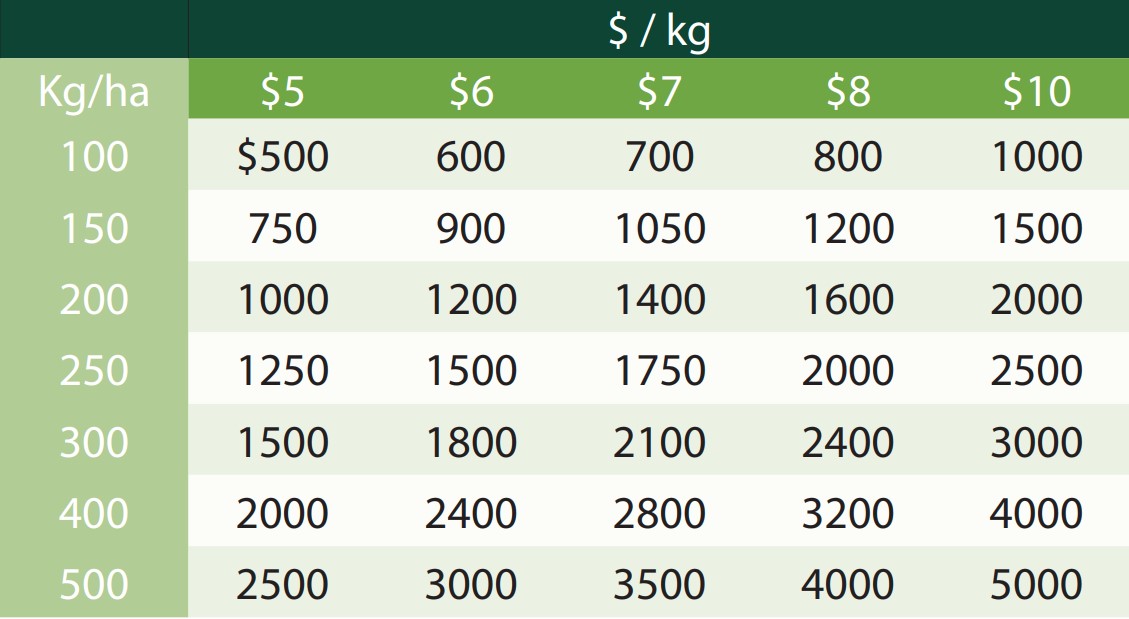
Derek and Leanne White, Wairere clients and winners of the Wairere Central Districts Red Meat Farmer of the Year in 2021-22 had a gross revenue of $2,000 per hectare.
More kg per hectare
- The biggest constraint on producing more product per hectare is the low productivity of pasture. New Zealand’s hill country pasture is producing similar kgDM to forty years ago. By contast, dairying has used irrigation, nitrogen fertiliser, new pasture, imported palm kernel/maize/barley/baleage to lift milksolids per hectare.
- Our traditional management using fertiliser for more pasture, and grazing management by subdivision for higher quality pasture, is under stress from the much higher cost of both fertiliser and people. And being squeezed by lower product prices.
- Will technology provide a small and cheap chip, embedded in an ear tag, which acts to create a virtual fence? That would sharply reduce the maintenance cost of infrastructure, and improve utilisation without the need for break fencing. Cell grazing with cattle has a dramatic effect on kg live weight produced per hectare.
- Australian sheep farmers have access to cheaper supplementary feed. Paddock feedlots are common.
- Every other form of farming has improved productivity per hectare. Sheep farmers have switched emphasis from wool to meat, used improved genetics to increase per head productivity, with some using nitrogen fertiliser and new species on cultivable land, but uncultivable hill country is difficult to transform.
- Will gene edited ryegrass be allowed? Current trials are happening in the USA. What would be ideal is a deep rooting white clover which grows as much DM per hectare as lucerne, and is winter active. A higher protein diet assists faster growth rate and resilience to internal parasites.
- Body Condition Score monitoring is the cheapest way to optimise the feed supply/demand equation for your farm.
- Growing ewe lambs and hoggets better: how much more feed, both quantity and quality, is needed to have ewe hoggets average 50kg on May 1 instead of 40kg?
- There is no absolute to productivity, only relativity to competitors and substitutes. There was a saying which emerged in the difficult years of the late 1980s, “Get bigger, get better, or get out”. One problem we face is the subsidy for carbon forestry, which has inflated rural land prices by 50-100%. How do we compete with a subsidy? Those who have paid too much for land are now donkey deep in debt.
- Wairere has put sheep under commercial farming pressure since 1967 to select those which have performed best in competing for the feed supply available. This pressure has bred efficient ewes which can buffer difficult conditions, then bounce back to perform at a high level when feed allows
More $ per kg
- Niche marketers. For example, Wairere invested in Lean Meats/Atkins Sheep Ranch in 1990. “Overnight success” took twenty five years. The company has around fifty staff in California servicing the North American market. Most farmer initiated companies run out of money and commitment. Lean Meats was fortunate that Craig Hickson bridged a gap with the bank in 2014. There is now a good balance between rewards to suppliers and to shareholders.
- Large scale supply. There are groups of breeding and finishing farmers who have formed supply groups, and have enough lambs to negotiate a premium with a processing company. There are disciplines around these arrangements. The processor uses big suppliers to top up sudden shortages in supply for Monday kills, for example.
- The Regenerative brand. There are at least a hundred farmers in the lower North Island who are being monitored annually for accreditation under the Land to Market brand, or Atkins Sheep Ranch. Soil samples at 30cm, plus fourteen observations of soil health, observations of the health of pasture and other vegetation…all provide a profile of ecosystem health. The Savory Institute’s Regen brand is non-prescriptive. Many of these farmers are still applying fertiliser and farming in a similar manner to historical. Quite apart from being an education on soil and pasture ecology, there are premiums available on pelts, wool, and meat.
- Intramuscular fat. This can now be measured at processing chain speed. A high level of IMF offers greater succulence, eating quality which encourages repeat business and premium payment for farmers. Maternal sheep breeds tend to have a naturally good level of IMF, but are dependent on quality of feed to enhance that level. Wairere has embarked on a selection program to find sire and dam lines with superior IMF.
- Pet food businesses have flourished in recent years, earning their shareholders a much better return than processing for human consumption.
- Pharmaceuticals derived from the sheep’s “fifth quarter” are still being extracted and developed. Watch this space.
- How can we capture a premium like Rockitt apples where the packaging of small apples has created a substantial premium? Rockitt is currently only 0.2% of China’s premium fruit market.
- New Zealand crayfish sell live for $NZ100-160 per kg to China, where they are used as the centrepiece of dishes served at important occasions, such as weddings. The crayfish, unique in colour and appearance, are proof of success and status.
- New Zealand abalone, paua, also sells for a premium. A few years ago Chinese started farming abalone. After four years production was up to 100,000t annually, compared to New Zealand’s wild catch of 2,500t. Fortunately, the discerning elite prefer to eat abalone from New Zealand’s unpolluted waters.
- At farm level, Wairere is the best known sheep brand in the country. Our reputation for sheep which shift well often results in premiums for store stock and surplus breeding females.
Cost control
- Variable spread of fertiliser is a recent technological advance.
- Avoid the “dreaded D’s”…docking, dagging, dipping, drenching. Nudies offer the option of taking cost of labour to a new low. If staff numbers can be reduced by one, or if the farmer can run another business during the day, sheep which are like mini cattle look most attractive.
- Another D, drones, may reduce costs for spraying, fertiliser application, inspection, and mustering.
- Guy Goodeve presented on his experience in big scale dairy and big scale sheep and beef. He mentioned contractors for docking/tailing, conveyors, sheep handlers, sophisticated hydraulic tailing chutes with auto dipping, electric eye dipping, drones, and assurance programs for preferred market access.
- Guy’s guiding principles include:
- a) good planning,
- b) minimise staff,
- c) good quality equipment and vehicles,
- d) always go bigger to future proof,
- e) 90:10 rule, do 90% really well, don’t chase perfection,
- f) KISS, three classes of stock maximum per block,
- g) discipline, “needs versus wants”,
- h) every dollar is a prisoner,
- i) rule of 1% is a good focus…improvement by 1% in all aspects will drop more profit out the bottom.
- Wairere’s contribution to reducing your costs includes: All hoggets mated since 1966, with no shepherding at lambing, selecting for early maturity and easycare. They do the work so you don’t have to. Clients often talk about the “bounce back” capacity of Wairere sheep, the ability to buffer a tough season and still produce beyond expectations.
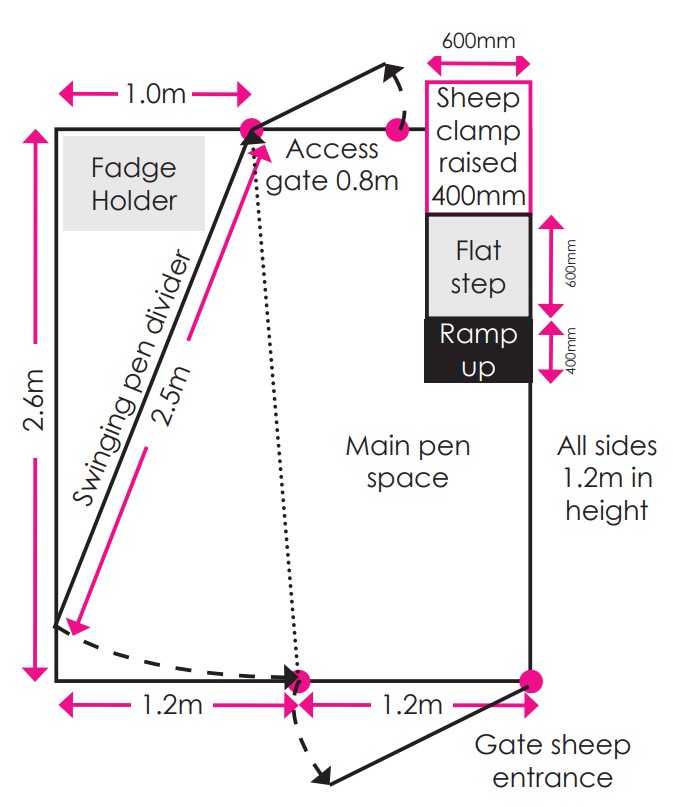
Wairere’s one person dagging clamp. Take one step back, a sheep runs into the clamp.
Wool you? won’t you?
Wairere has a foot in either camp. The WRONZ deconstruction process has always had a target of being able to pay much higher prices at the farm gate. Length, micron, colour, black spots won’t matter in some instances. The process breaks down wool to a particle or powder, which then enables a wide range of high value uses. New Uses commercialisation manager, Tom Hooper, predicts an ultimate target of a large deconstruction plant beside each of the two main scours in New Zealand. Face to face discussions with potential clients in both Europe and America will happen in September and October.
If we can earn $350 revenue per hectare from wool, and reduce costs in the woolshed, then a net $250 can be added to the bottom line. That’s a target worth investing in.
John McWhirter became CEO of Wools of New Zealand three years ago. Immediately he changed the approach of WoNZ from selling the raw fibre to contracting the manufacture of branded carpet in Turkey, bypassing all the costs of middlemen. WoNZ now has carpet tiles available, which are often favoured over carpet for commercial use. A third initiative is a product using wool for fireproofing. This is still at the developmental stage, but shows great promise.
Investment beyond the farm gate
Wairere has invested around $7 million in farming related businesses since 1990. These include Lean Meats (Atkins Sheep Ranch), Cross Slot drills, Manuka honey, Wools of New Zealand, NZ Yarn, Mirocool Manuka honey, Knewe (a prebiotic). As a ram breeder I’ve always felt a responsibility to enhance farming returns. Most farmer initiated businesses run out of money and patience. And it would be true to say that simply investing in more land would have produced a greater return on capital.
Go woke, go broke
Wairere has invested a lot of time, energy and cash to fighting for farmers in the political arena over recent years. This has involved highlighting environmental hypocrisy with all its contradictions, double standards and symbolic gestures. It’s a tough battle. For example, our 50shadesofgreen group has received around $160,000 in funding over six years, and we are up against organisations like GreenPeace with annual global funding of around $NZ1 billion!
“Big Oil” is constantly derided, yet we all enjoy cheap fuel 24/7, 400million tonnes of plastic per year, 65% of the world’s fibre market, and cheap food from nitrogen fertiliser, without which 60% of the world’s population would die. In 2022 the EU declared nuclear energy and natural gas to be Green. Natural gas is 70-90% methane. What could be more natural than the methane from our ruminant animals? (Idea: let’s exterminate termites around the world, as they are responsible for 14% of annual methane emissions. Mao Tse Tung was successful in ridding China of flies…). Wairere helped pay for Dr Tom Sheahen’s speaking tour of New Zealand in June. He not only revealed the latest science about the irrelevance of methane and nitrous oxide in warming the planet, but also that doubling the level of CO2 in the atmosphere would have negligible heating effect. “Mankind is doing a service to Earth by releasing CO2 via fossil fuels, and enhancing life. For most of the past three hundred million years the CO2 level in the atmosphere has been much higher than today, starting at around 6,000ppm as compared to 424ppm today. Life flourished.”
Ideology is making New Zealand poor fast. We ignore our natural resources, unlike Australia and Canada. That has major consequences, with a large flow of talented New Zealanders deserting this country to higher living standards elsewhere.
Competitors
The global sheep population is static or shrinking, except in Australia, our main competitor in export markets. The Australian sheep population has increased by an estimated 16 million since big rains in early 2020. And in recent years breeding emphasis has switched from wool to meat, even in some Merino studs. There has been a rapid improvement in both lambing percentage and carcass weight. The net result is that Australian lamb export tonnage is growing while New Zealand’s is shrinking. The Australian domestic lamb market consumes around 47% of lamb produced, compared to our domestic market at 5%.
However, the sudden drop in farm gate lamb price will force Australian farmers to reconsider the economics of supplementary feed. There could be a drop in average carcass weight from 25kg to 23kg, which would reduce annual production by 50,000 tonnes.
Substitutes
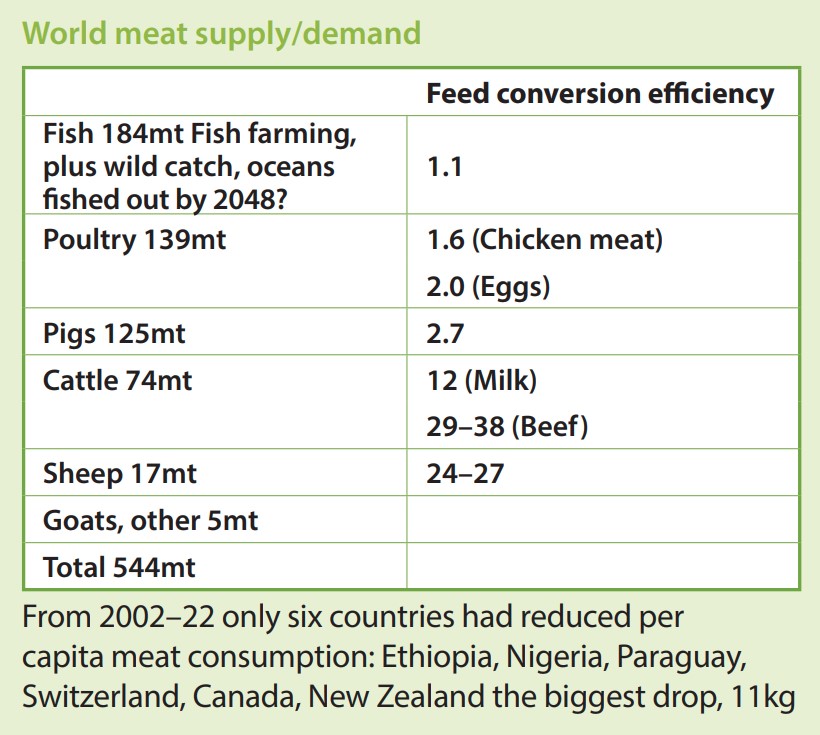
Structure
Simon Buckley has been on a mission for the past twenty years towards a lifetime structural guarantee. He supervises the inspection of 22,000 ewes and ewe hoggets each year for feet/ pasterns/jaw/type/balls/udders/wool/black spot/dark/dags. We are not after perfection. Functionality and productivity are more important.
Sire analysis
- Daughter performance
- Maternal traits
- Retention ratios
- Deciding which sires are worth re-using
- Culling and structure
- Progeny testing
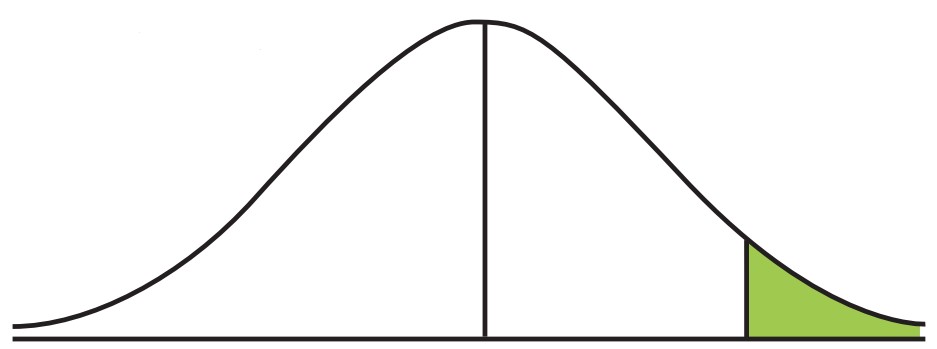
Always looking for sires at the highest index level.
Proven, Predictable, Profitable
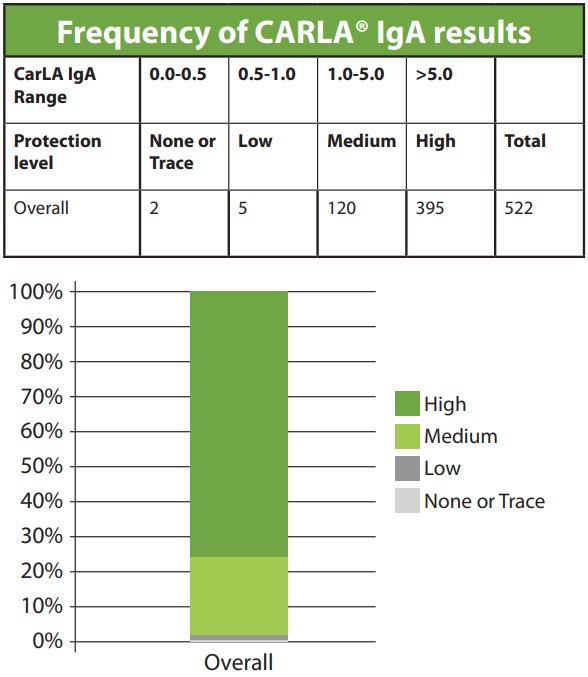
Wairere’s recent Carla test of one thousand ewe hoggets in June demonstrated a very high level of antibodies to internal parasite infection.
Sales as a percentage of ram lambs docked
- We do the work so you don’t have to
- Culling policy ensures you only have the best to look at
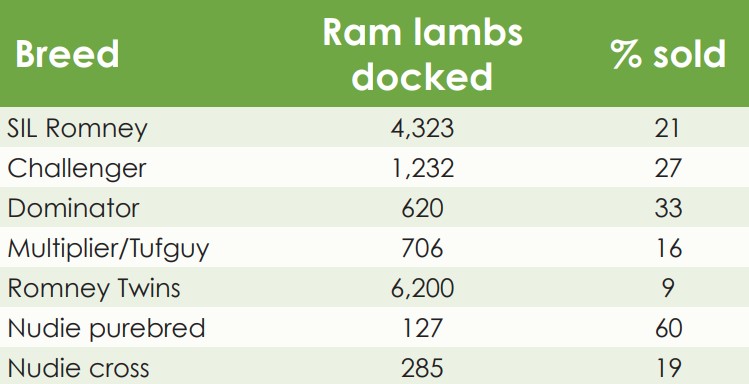
Internal parasites
Drench resistance to triple combinations is raising the spectre of poorer lamb growth rate, and a new era of reliance on two more recent drench families. How do we manage worms, given their generation turnover can be fifty times that of sheep?
Wairere was involved with AgResearch trials, 1991-93, and 1998-2004.
Since 2005 mixed age ewes have never been drenched. The same has applied to two tooth ewes for thirteen of those eighteen years. The 190 Wairere two tooth ewes flown to Australia, and all their female progeny were never drenched as ewes, which was a huge contrast to the Australian practice of drenching ewes several times per year. There is a conflict for ram breeders in a policy of not drenching lambs…there can be a big build up of parasite numbers on pasture and in sheep. Then rams are not as well grown and clients walk away.
What tools are at your disposal?
- Wean lambs at an older age. Bigger lambs can buffer a parasite burden better, and gain relative immunity sooner.
- Provide a high protein diet, from mother’s milk to clover/lucerne/young grass/chicory/plantain.
- Feed crops, especially for the March/April period when parasite numbers increase exponentially.
- Follow lambs with non drenched ewes, partially for ewes to eat parasite larvae, but also to dilute any resistant worms with susceptible worms.
- A higher cattle ratio can help.
- Faster growth rate results in lambs leaving your farm earlier. Wairere has been focused on growth rate for decades. Along the way we ignored the obsession with fleece weight 1987-90, the “Lean Growth Index” in the 1990s, the idea that small ewes are the most desirable, and a high relative economic value on number of lambs born, NLB. Wairere selects sires for number of lambs weaned rather than born, large eye muscle with no penalty for fat, and fast growth in a competitive environment. A large mob rotated around hill country selects indirectly for resilience/resistance to worms.
- There is new drenching gun technology which connects the gun by blue tooth to the body weight from scales under a clamp, adjusting each dose to each lamb. This can save a lot of money with the use of the new drench families.
- Carla test. A saliva swab allows a laboratory test to check the immunity status of lambs/hoggets. This diagram shows the high immunity status of Wairere hoggets tested in June 2023. We will continue to use the Carla test to identify the most promising genetics for parasite resilience/resistance.
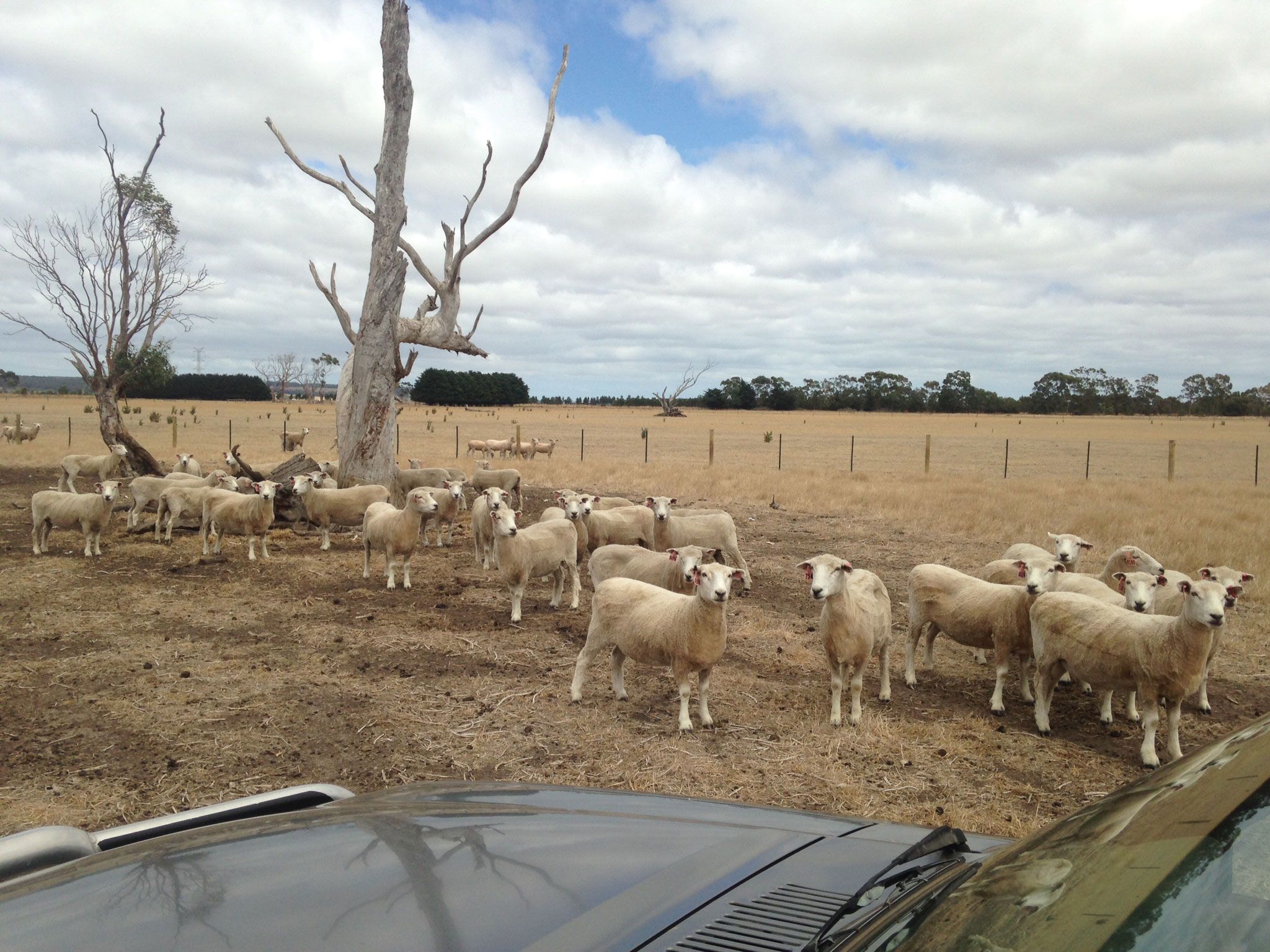
Wairere ewes in Australia. Neither these ewes nor their progeny as ewes were drenched in the past eight years. Wairere resilience to parasites showed up strongly in Australia, where ewe drenching is standard practice.
Client success stories
Justin and Deanna McCarthy, Taihape
“My accountant told me recently that I wouldn’t be farming if I hadn’t changed to Wairere rams in 2004. I was lucky to do 110% lambing in those days, and my sheep lacked doing ability. Now I do 160% consistently, and kill 80-85% of terminal lambs POM, and 75% from the Romneys. That sets the scene for the rest of the year, growing out ewe lambs well and ensuring the ewes are in good nick at mating. It has become an easy, virtuous cycle.”
Clinton and Katrina Overton, Taihape
“We spent eight years in the remote Waikura valley, managing East Cape stations running 45,000su by the time I left. That included a mix of dairy stock with sheep and beef. We then returned to Katrina’s home area, Taihape, where I spent the next twenty years doing a combination of farm managing, fencing, and other contract and casual work. Hard to believe, but at age 58 the chance came up to buy Katrina’s family farm, owing to a change in their family’s circumstances. I was determined to make succession a happy outcome for everyone. We have been successful in doing that.
We then bought a whole team of Wairere rams to put over the Perendale flock inherited from my father in law. The results have been outstanding. Average lamb weight jumped from 18kg and some sold store to 20kg with the first cross, all sold prime. My drafter said that I had the best lambs in the district in the difficult spring of 2022.
Scanning has moved from 140-150% with the Perendales to 175% this year. Our two children are in their twenties and involved in agriculture, so that has given us inspiration to set up an intergenerational enterprise.”
Humphrey Bayly, Wairoa
“My great grandfather sold Okare Station to a branch of the Williams family in 1918, but no cash changed hands. In 1934 the Williams gave up, so Bayly took over Okare again. Back then wool was taken out by packhorse to a shed on a road, where the wool was repacked into conventional bales. From there it was taken to the mouth of the Wairoa river, and ferried out to a ship. Lots of hard work, and it shows how valuable wool was in those days.
Since 1934 there have been only four managers at Okare. Jim Weir was there for 34 years until 1998. Earl Twigley has been there for 25 years, and continues to enhance the reputation of the Station and the stock.
Earl has been mating 5-6,000 hoggets, and consistently lambs 140% from 17,000 ewes. There is strong demand for store stock from local finishers. My father started buying Wairere rams in 1987, and apart from a brief period of going back to Perendales, we have continued to buy Wairere rams ever since.”
Matt and Katy Iremonger, Banks Peninsula
Matt: “From an equity manager’s role on Mt Benger, a 20,000su North Canterbury property, I was lucky to land the role of managing what is now 50,000su at Willesden for the Thomas family. The role at Willesden is challenging, with the farming ranging from arable at sea level to dairy (1,600 cows) to irrigation to forestry to sheep and beef running up to the top of Mt Herbert at nearly 1,000masl. In the seven years that I’ve been here sheep performance has gone up and up. This year scanning was over 200% across 12,000 ewes. I’m buying Wairere rams which are twins out of hoggets. I had been buying Wairere rams since 2008 for Mt Benger and enjoyed their performance through tough drought conditions. Wairere rams have put a stamp on our Willesden flock, and made our ewes and hoggets look more even as well as more productive, despite scale and pressure.”
Other observations:
- Australians are perplexed at the way politicians and lobby groups are undermining farming in New Zealand, the engine room of the economy. We appear to be inward looking, naive and negative. Other countries are scrambling to have greater energy security, greater food security, and improved food safety. New Zealand seems to be on a mission to be more dependent rather than more self reliant.
- The single biggest risk for New Zealand is energy security.
- The Extension Service within the Land Grant Universities of the USA supports school age kids in the 4H program. Their collaboration, positivity and celebration of success is something we have lost in NZ agriculture.
- New Zealand needs a fresh approach towards communicating to our wider community the essential role that ruminant animal agriculture has in sustainable food systems.
- Many farmers could update budgets more often, so there are no surprises in a cost/price downturn.
- But agriculture is still a positive sector to be part of. People’s attitudes in the USA and Australia were positive and refreshing.
Mike and Jane Cammock, Wairarapa
“We inherited a flock which has used Wairere rams since 1984. My father in law, Mike Murray, was a pioneer investor in Lean Meats in 1989, and a director for years. A big proportion of each year’s lamb crop was grown to 18-24kg carcass weight. I have continued with that system, plus taken advantage of Regenerative premiums for pelts and wool since 2020.
Wairere listed my surplus ewe lambs for sale in May. Within 24 hours I had a buyer at a premium. Service and performance will keep me buying Wairere rams for another forty years.”
Tom Bell, South Canterbury
“I manage Blue Cliffs for brothers John and Dr. William Rolleston.
Blue Cliffs runs 11,000 ewes, 3,000 hoggets and finishes the majority of its lambs. 6 years ago I decided to simplify management and increase per head performance by putting Wairere rams over 2,400 perendales being run on harder tussock country competing with wallabies.
This has worked really well, lifting lambing percentage, weighing
weights and improved the temperament of the sheep. All with
no other tweaks to management.
I first managed Wairere sheep at Winterholme in Marlborough. Their production in a summer dry climate was much to be admired.
Lamb growth rates don’t come as easily in this wetter foothills environment of South Canterbury, but Wairere sheep definitely ‘walk the talk’ here at Blue Cliffs.”
Chris Mulvaney, Stockcare
“I’ve been involved with hundreds of farms throughout the North and South Islands with a particular focus on the productivity of the sheep production systems. All farms and all farmers are different so finding the sweet spot for farm productivity is always a challenge. I’ve compared Wairere genetics on several farms over the years and in all cases the owners gained confidence to make the investment to change to Wairere genetics. Wairere genetics are a very good fit for the majority of hill country properties.”
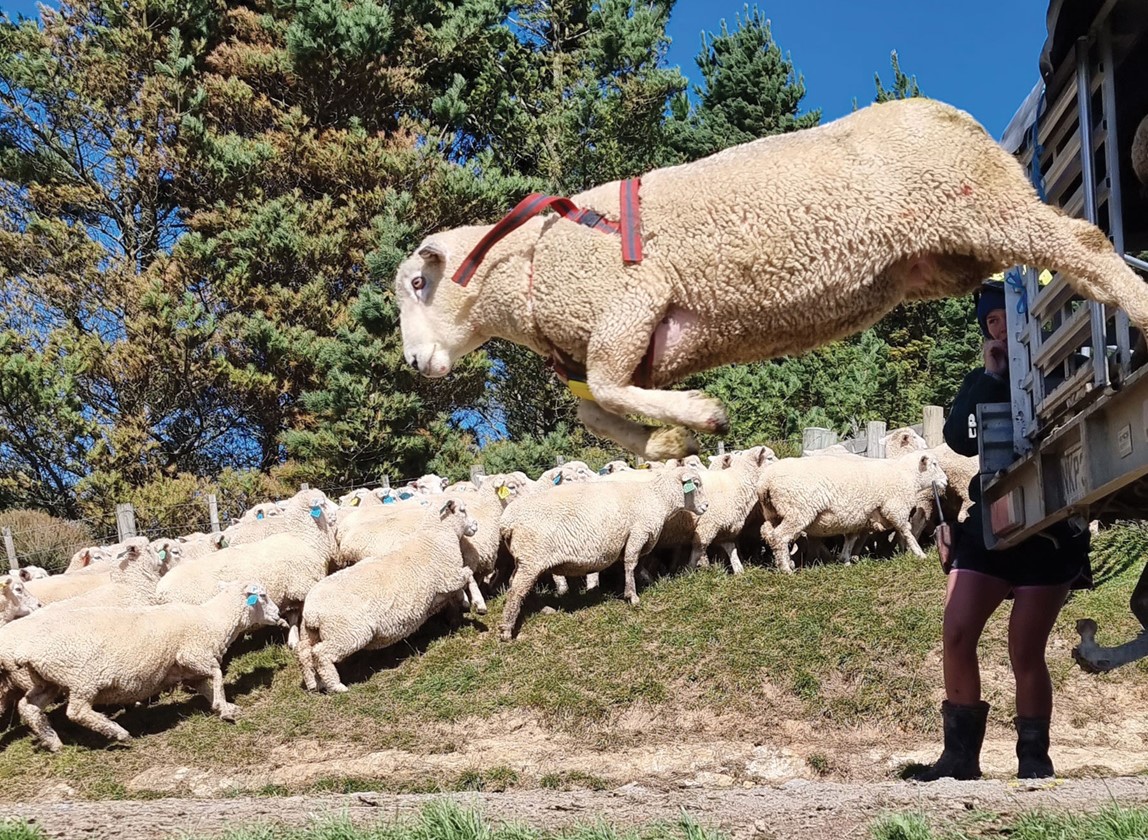
Wairere rams are jumping into action all over New Zealand. Here’s wishing you a good season in 2023-24.
Derek and the Wairere team
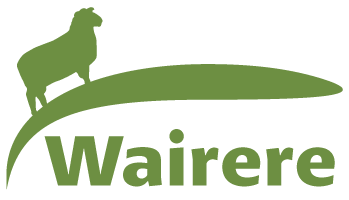
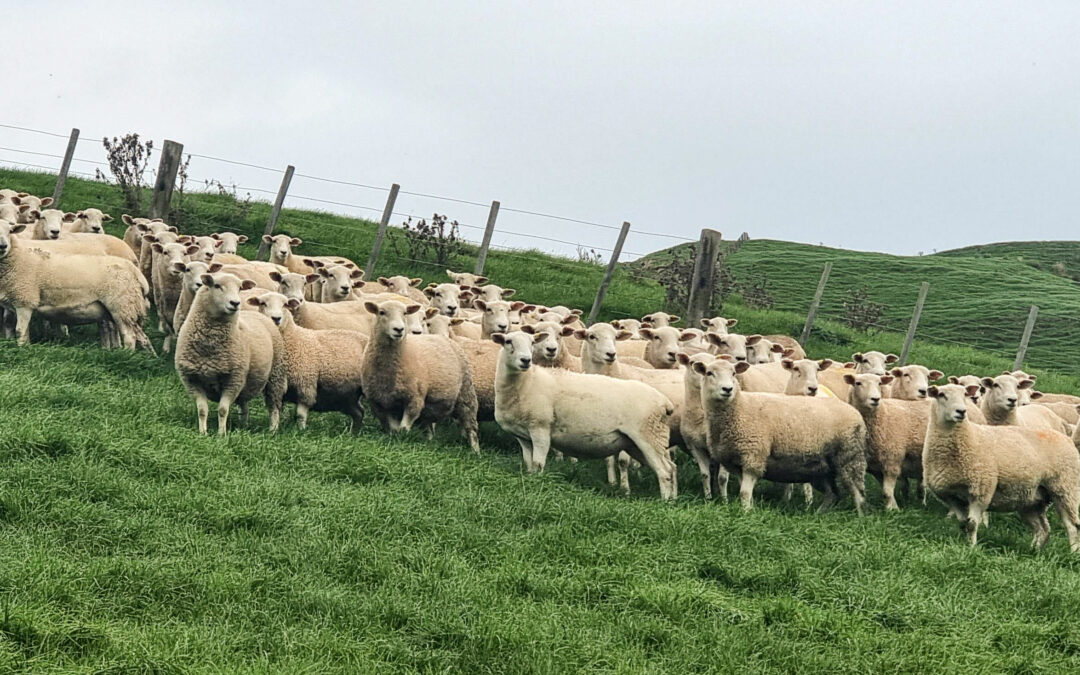
Recent Comments